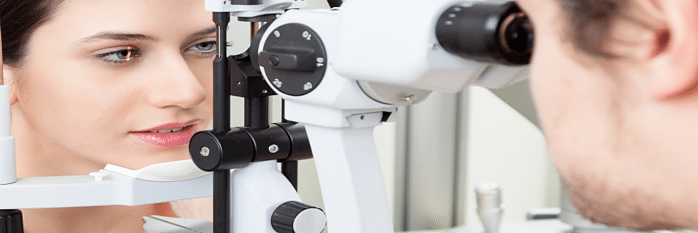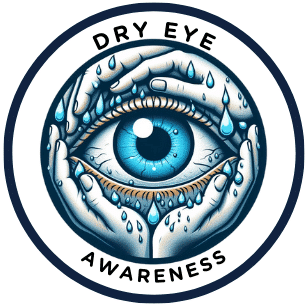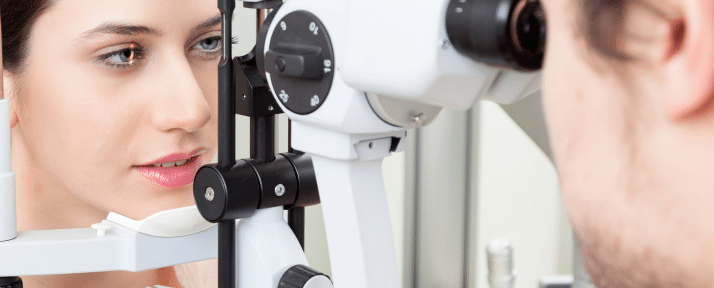
I’m often struck by how frequently Dry Eye Syndrome (DES) is shrugged off as a mere inconvenience when, in reality, it can significantly affect a person’s life. Dry eye is more than just an occasional discomfort; it’s a common condition that may signal underlying health issues or, at the very least, detract from the quality of daily experiences.
DES is widely misunderstood. It’s not always due to a lack of tears. It can stem from various causes, such as poor tear quality or meibomian gland dysfunction. Moreover, DES symptoms range from mild irritation to severe inflammation and can lead to more significant vision problems if left unchecked.
Symptoms like persistent dryness, scratchiness, or even excessive tearing can all be confusing signals that something isn’t quite right with our eyes. Unfortunately, these symptoms can be mistaken for fatigue or temporary irritation. Most concerning is when DES begins to interfere with activities, such as reading or driving, especially at night, reminding us of the condition’s potential impact on our daily function.
So why is a comprehensive eye exam so critical for those suffering from DES? It’s simple: accurate diagnosis. Unlike a routine vision check that assesses your eyesight, a comprehensive eye exam is an in-depth investigation into eye health, and it is essential for uncovering the intricacies of DES. Eye care professionals use it to not only confirm the presence of DES but also to understand its severity and the best course of treatment. Armed with this knowledge, I can guide you to the next step, which involves an even closer look at your eyes. Stick with me, and we’ll explore the specifics of the comprehensive eye exams that unlock the mysteries of DES.
The Comprehensive Eye Exam: Unlocking the Clues to Dry Eye
You might wonder what happens during an eye exam specifically geared toward diagnosing Dry Eye Syndrome (DES). It’s not just about reading letters off a chart from a distance; it’s a series of investigative steps aimed at understanding the health of your eyes. A standard vision test is merely the starting point.
Several specialized tests are part of this in-depth look at your eyes. First, there’s the tear production test, commonly known as the Schirmer’s test. This straightforward procedure measures the volume of tears that your eyes produce and is essential for assessing an important aspect of DES. Another test that measures the same is called the Phenol Red test, and I prefer this test to the Schirmer test for my patients because it is more comfortable to do and more accurate. Another test that I often perform is called the Lissamine Green test. Lissamine Green is a drop I use to detect devitalized cells in the conjunctiva, the clear tissue that covers the sclera, the white part of your eyes, and it is a test that can help determine the severity of DES.
Next comes evaluating the quality of the tear film—with a test like the tear breakup time (TBUT), eye care specialists determine how well your tears are functioning to keep your eyes sufficiently lubricated. A healthy tear film is critical for preventing eye irritation and ensuring clear vision.
Another key component is the examination of the surface of the eye using a slit lamp, which provides a magnified, three-dimensional view. This allows your doctor to look for any signs of damage to the cornea and conjunctiva, which are often affected by DES.
Understanding these tests helps to distinguish DES from other conditions that might mimic its symptoms, like allergies or conjunctivitis. Accurate diagnosis is crucial for managing the condition effectively and preventing further eye damage.
But it’s not enough to diagnose DES once and move on. The condition can evolve, and symptoms may fluctuate over time, making regular check-ups a must. By monitoring your eye health consistently, any necessary adjustments to your treatment can be made in a timely manner, ensuring the best ongoing care for your eyes.
Beyond the Basics: The Human-Centered Approach to Dry Eye Diagnosis
Dry eye syndrome (DES) isn’t just about dry eyes – it’s about people. That’s why a human-centered approach in the diagnosis of this condition is paramount. This means considering not just the clinical symptoms, but the personal stories and daily challenges that come with DES.
Tailoring the examination process to the needs of each individual is vital. We look at lifestyle, environmental factors, and work habits that could influence the condition. This personalized strategy ensures that every subtlety and nuance of the patient’s experience is addressed.
As eye care professionals, it’s not enough to just run tests; we need to educate patients about DES. When someone understands the ‘what’ and ‘why’ of their symptoms, they’re more likely to engage with their treatment plan. This education also helps in setting realistic expectations about what can be achieved through therapy.
The partnership between the patient and eye care practitioner is a cornerstone of effective DES management. This relationship is built on trust, understanding, and frequent communication. It’s about creating a space where patients feel comfortable discussing their symptoms, concerns, and progress.
As we venture into the next section, remember this: the goal is not just alleviating symptoms but enhancing the quality of life. This requires not just medical intervention but a supportive framework that empowers patients to manage DES in their daily lives.
The Impact and Management of Dry Eye Syndrome: A Path to Relief
Untreated Dry Eye Syndrome (DES) isn’t a minor inconvenience; it can evolve into a chronic condition impacting your daily life. A correct diagnosis is crucial not just to alleviate discomfort but to prevent potential long-term damage to the eyes.
The comprehensive eye exam is your first step to discovering the right treatment options. Once your eye care professional understands the specifics of your condition, you may be introduced to a range of treatments. These could include over-the-counter remedies like artificial tears, prescription medications, or even minor in-office procedures. Remember, the goal is to target the source of your DES, not just the symptoms.
Adjustments to your environment and habits can play a significant role in managing DES. This could mean protecting your eyes from dry air, taking breaks during tasks that require sustained focus, or incorporating foods high in omega-3 fatty acids into your diet.
Follow-up care is paramount. DES is dynamic; your eye health can change, and so should your management plan. Regular appointments ensure any adjustments to treatment are made timely, allowing you to maintain the best possible eye health and comfort.


This is an excellent professional article. I am thrilled to understand DES more deeply. It is a term bandied about that is rarely made as clear as you have made it. So thank you for that.
I live in Japan, where I can get excellent eye care. I am in my seventies now, so I have regular checkups twice a year for glaucoma. I am also very active on screen devices, so I work my eyes very hard for someone my age. I was diagnosed with DES about 3 years ago and given the appropriate medicine. However, now the tide of opinion/practice about it seems to have turned, and everyone is doing regular blinking exercises publicised on national broadcasting stations, so I no longer prescribe artificial tears.
I wonder what you think about this. Should I insist on taking medicine? My eyes do get tired and dry, so I blink in the right rhythm, and tears flow and cleanse my eyes. Sometimes I experience itchiness, but not so often!
This topic is great because everyone wants healthy eyes, especially as we age, and they are such beautiful organs. So, I look forward to many more articles on your site, which btw I have bookmarked!
Thank you for caring!
Thank you for you comment Linden.
I am glad you found value in my article. DES is a chronic condition and has many treatments depending on the source of the DES and the best treatment needs to be tailored to your unique eyes by your eye doctor.
I still recommend artificial tears to many patients. Certainly blinking more often, especially when using computer screens and devices such as tablets and smartphones, is very helpful to improve the stability of the tear film. Still, I find many patient benefit from artificial tears, as well as other treatments.
The determination as to whether medications are appropriate for your eyes needs to be evaluated and prescribed by your eye doctor. I cannot assess the need for this on a forum like this. I would need to have you come in for an eye examination for that. You are most certainly welcome to come into my office for that but I am sure your eye doctor is more than qualified to do that for you.
I appreciate that you bookmarked my site. I am sure you will find other useful articles on my site and I intend to post more in the future that you will likely find to be helpful.
Feel free to post any other questions or comments as they arise and I will do my best to help out in any way I can.
All the best,
Mark Horwitz, O.D.